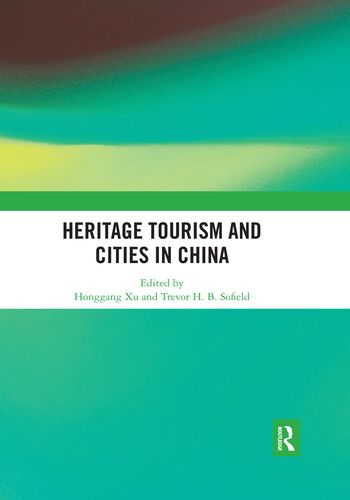Readings Newsletter
Become a Readings Member to make your shopping experience even easier.
Sign in or sign up for free!
You’re not far away from qualifying for FREE standard shipping within Australia
You’ve qualified for FREE standard shipping within Australia
The cart is loading…






China has surged into the 21st century as one of the most rapidly modernizing countries in the world. Its burgeoning cities reflect this extraordinary growth with a dazzling array of new architectural forms and designs. In its transformation, the 5000-year old heritage of its built civilization, embedded in its villages, towns and cities, has often been replaced. The Chinese Government, aware of the value of this heritage, has in recent years taken concrete steps to conserve and preserve not just national icons such as the Forbidden Palace in Beijing, the Great Wall of China and the Grey Goose Pagoda in Xian but also the more general historic fabric of its urban development over the centuries. The challenges are great, particularly as population growth and rural-urban drift have combined to place enormous pressure on city resources. The chapters in this book explore these challenges as well as analysing other institutional, cultural, social and economic issues related to urban heritage conservation and utilization, with a focus on the role of tourism in reinforcing conservation values by finding new uses for old buildings and districts. This book covers new areas of heritage tourism research in Chinese cities.
The chapters were originally published in a special issue of the Journal of Heritage Tourism.
$9.00 standard shipping within Australia
FREE standard shipping within Australia for orders over $100.00
Express & International shipping calculated at checkout
China has surged into the 21st century as one of the most rapidly modernizing countries in the world. Its burgeoning cities reflect this extraordinary growth with a dazzling array of new architectural forms and designs. In its transformation, the 5000-year old heritage of its built civilization, embedded in its villages, towns and cities, has often been replaced. The Chinese Government, aware of the value of this heritage, has in recent years taken concrete steps to conserve and preserve not just national icons such as the Forbidden Palace in Beijing, the Great Wall of China and the Grey Goose Pagoda in Xian but also the more general historic fabric of its urban development over the centuries. The challenges are great, particularly as population growth and rural-urban drift have combined to place enormous pressure on city resources. The chapters in this book explore these challenges as well as analysing other institutional, cultural, social and economic issues related to urban heritage conservation and utilization, with a focus on the role of tourism in reinforcing conservation values by finding new uses for old buildings and districts. This book covers new areas of heritage tourism research in Chinese cities.
The chapters were originally published in a special issue of the Journal of Heritage Tourism.